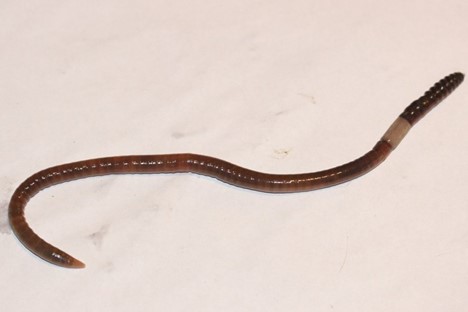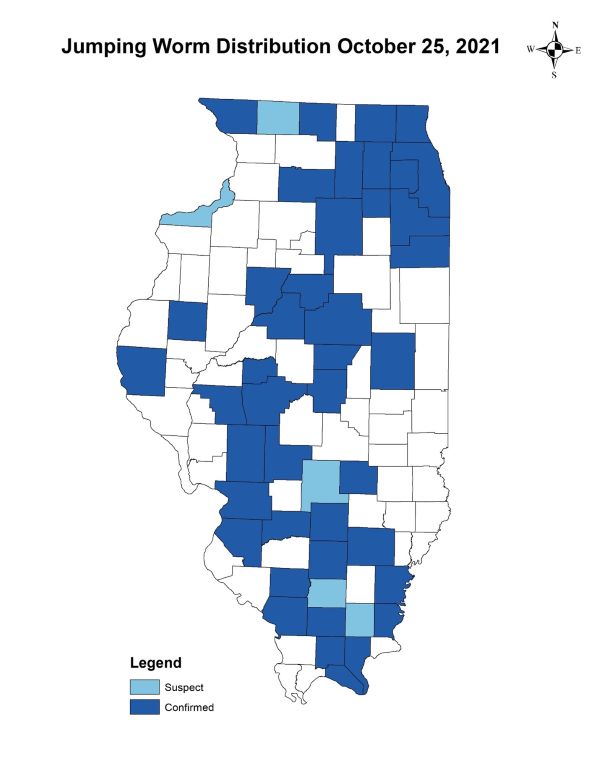Issue 3, May 26, 2022
Jumping Worm Update

Jumping worm, Chris Evans, University of Illinois
The map of known locations of the invasive jumping worms in Illinois continues to expand as more reports are being submitted. In 2015, jumping worms were first found in Illinois with a total of seven reports in three counties. Currently, we have known populations in 42 counties with another five counties suspected of having jumping worms.

Jumping worms are a concern for landowners in Illinois because of their ability to alter soil conditions. Specifically, they process organic matter very quickly. This process leads to an initial increase in nutrient availability following by rapid decline as the nutrients stored in the soil or the leaf litter are changed to a more mobile form and are lost from the system. Additionally, soil aggregate size in increased, which reduces soil water holding capacity, making the soil more vulnerable to droughty conditions.
In most of Illinois, jumping worm adults die in winter. In far southern Illinois, the soil temperatures are likely mild enough through winter to allow some adults to survive. Even with the adults dying yearly, populations persist through cocoons, which house and protect the eggs. Eggs should be hatching now with the young hatchlings starting to grow. While you may not see full-sized adults yet, jumping worms can reach maturity fast, often in as little as 80-90 days. Often multiple generations are produced in a single season.
Look for very active worms that tend to move more like a snake, with side-to-side motions, instead of the typical stretch-and-shrink that we are used to seeing worms do. Jumping worms will often move on top of the soil and under the grass and can be fairly fast. When disturbed, jumping worms will tend the thrash about wildly.
Look closer at jumping worms and you will see a band (the clitellum) around the worm that starts around the 14th segment behind the front of the worm. Most other worm species have a clitellum that starts further back, past the 20th segment. In jumping worms, this band will not be raised, but is instead the same diameter as the rest of the worm, setting it apart from most of the other worms that you might run across in Illinois.
If you suspect you have a population of jumping worms in a county that has not yet been verified, please report it by emailing pictures or a video of the worms to Extension Forester Chris Evans (cwevans@illinois.edu) or bring a sample to your local Extension office.
Author:
Chris Evans